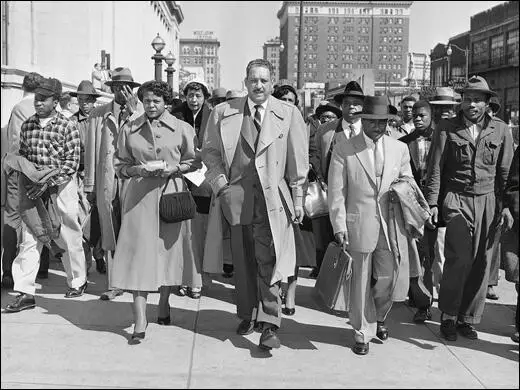On this day on 2nd October
On this day in 1492 King Henry VII of England invades France. Henry VII inherited a kingdom that was smaller than it had been for over 400 years. For the first time since the 11th century the realm did not include one French province. The only part of France still held by the English was the Marches of Calais, a strip of territory around the town of Calais.
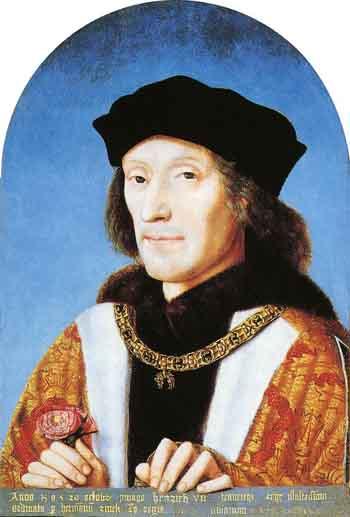
On this day in 1501 Catherine of Aragon (16) arrived in England on 2nd October 1501 to marry Prince Arthur (15). As a high-born Castilian bride, Catherine remained veiled to both her husband and her father-in-law until after the marriage ceremony. Henry would have been concerned by her size. She was described as "extremely short, even tiny". Henry could not complain as Arthur, now aged fifteen, was very small and undeveloped and was "half a head shorter" than Catherine. He was also described as having an "unhealthy" skin colour.
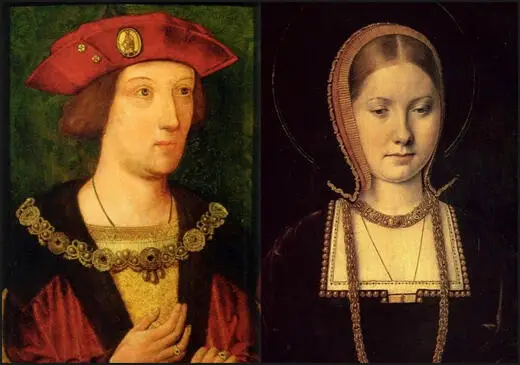
On this day in 1656 English North American colony of Connecticut passes law against Quakers. Over the next few years several Quakers were executed. On 1 June 1660, at nine in the morning, Mary Dyer was escorted to the gallows. While on the scaffold she was given the opportunity to save her life if she renounced her religious beliefs. She replied: "Nay, I cannot; for in obedience to the will of the Lord God I came, and in his will I abide faithful to the death. Nay, I came to keep blood guiltiness from you, desiring you to repeal the unrighteous and unjust law of banishment upon pain of death, made against the innocent servants of the Lord, therefore my blood will be required at your hands who willfully do it; but for those that do is in the simplicity of their hearts, I do desire the Lord to forgive them. I came to do the will of my Father, and in obedience to his will I stand even to the death."
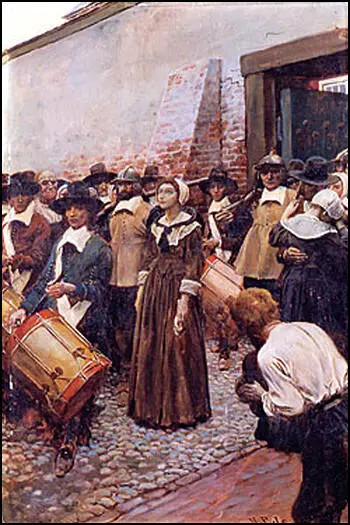
On this day in 1800 Nat Turner was born. He was the property of Benjamin Turner, a prosperous plantation owner. Nat's mother and grandmother had been brought to America from Africa and had a deep hatred of slavery. Nat grew up sharing his mother's view of slavery. Taught to read by his master's son, Nat developed deep religious beliefs and encouraged by his parents, gradually began to believe that God had chosen him to lead his people out of slavery. In 1831 Turner was sold to Joseph Travis. In February of that year an eclipse of the sun convinced Turner that this was a supernatural sign from God to start an insurrection. However, it wasn't until August 21st that Turner and about seven other slaves killed Travis and his family to launch his rebellion. In all, about 50 whites were killed. Turner had hoped this his action would cause a massive slave uprising but only 75 joined his rebellion. Over 3,000 members of the state militia were sent to deal with Turner's rebellion, and they were soon defeated. In retaliation, more than a hundred innocent slaves were killed. Turner went into hiding but was captured six weeks later. Nat Turner was executed on 11th November, 1831.
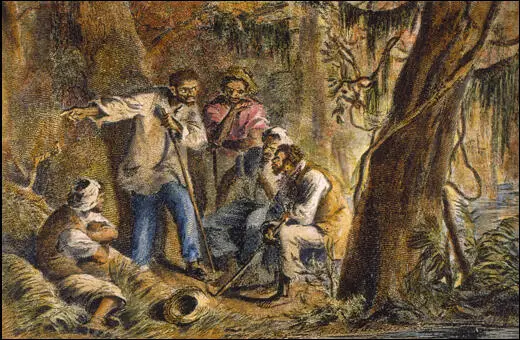
On this day in 1871 US Mormon leader Brigham Young arrested for bigamy. A supporter of the doctrine of plural marriage, Young had 59 wives and had 59 children by 16 of his wives. Brigham Young died in Salt Lake City on 29th August, 1877. By this time he had acquired a considerable fortune and left over $2,500,000 to his wives and children.
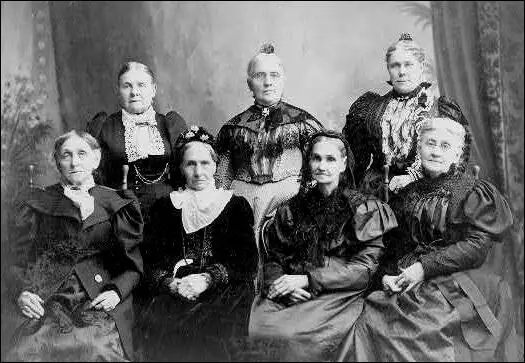
On this day in 1931 Pope Pius XI encyclical on economic crisis caused by Wall Street Crash.
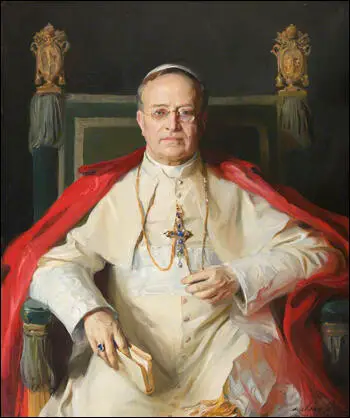
On this day in 1933 Eugene O'Neill's comedy Ah, Wilderness premieres in New York City. In 1936 he won the Nobel Prize for Literature and four years later he wrote the autobiographical play, Long Day's Journey Into Night. The action takes place during a single day in August 1912 at the summer home of the Tyrone family. The members of the family are the father, an actor, the drug-addicted mother, an alcoholic son and his younger brother suffering from tuberculosis (based on O'Neill himself). O'Neill left written instructions that stipulated that the play must not be made public until 25 years after his death.
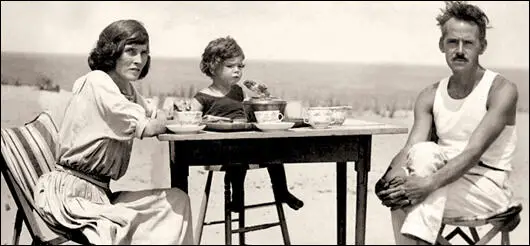
On this day in 1933 Elizabeth Thompson (Lady Butler) died.
Elizabeth Thompson was born in Lausanne in 1846. Her sister, Alice Thompson, was born the following year. Both Elizabeth's parents were interested in art and at an early age she was encouraged to paint and draw. At first Elizabeth concentrated on painting portraits and landscapes but after visiting France, where she saw paintings inspired by the Franco-Prussian War, she began to paint military subjects.
In 1874 submitted a painting entitled the Roll Call to the Royal Academy in London. The selection committee were impressed and decided to include it in the Academy's yearly exhibition. The painting caused a sensation. Crowds flocked to the Academy to see the painting. The Spectator reported: "There is an inconvenient crowd in the same corner of the room that hangs Miss Elizabeth Thompson's Calling the Roll. On Monday, when we were there it was almost impossible to see it." It was so popular that it was decided to take the painting on a tour around the country. Wherever it went, large queues formed to see the picture.
There was also great competition to buy the Roll Call but when Queen Victoria made it clear that she wanted it, the other bidders agreed to withdraw their bids. However, Victoria did agree that an engraving should be made of the picture. Prints were made from the engraving and this allowed thousands of people all over Britain to have their own copy of the Roll Call hanging on their wall.
The main reason why Elizabeth's painting created such a sensation was that she had taken a completely new approach to military paintings. Up until this time military paintings had shown "panoramic views of battles or scenes of gallant officers performing heroic deeds". However, Elizabeth had painted a picture of a group of British soldiers after they had taken part in a battle during the Crimean War. Unlike previous military painters, Butler was interested in recording the pain and suffering of ordinary soldiers.
Roll Call also caused a sensation because it was painted by a woman. In the nineteenth century there were few women artists. Those that did paint, did not paint military subjects. Elizabeth Thompson helped to change peoples' attitudes towards women artists. John Ruskin, Britain's leading art critic at the time wrote: "I have always said that no women could paint." After seeing Roll Call Ruskin admitted he had been wrong.
By 1875 Thompson was the most popular and well-known painter in Britain. For the next five years large sums of money were paid for her military paintings. Elizabeth always took great care to make sure details of her picture was correct. Soldiers who had taken part in the battle would visit her studio in Portsmouth. These men would pose for her wearing the uniforms and carrying the weapons that they had used during the battle.
In 1877, Elizabeth married Major William Butler. Her husband came from a poor Roman Catholic family from Ireland. William had strong opinions about the way the Catholics had been treated in Ireland. His views had an influence on Elizabeth. For example, while living in Ireland, Elizabeth Thompson heard of a Catholic woman who was about to be evicted from her home. Elizabeth hurried to the scene and arrived to find the women's cabin had been destroyed by the landlord. While the women searched the ruins for her belongings, Elizabeth set up her easel and began to paint the scene. For historical reasons the British public had little sympathy for the plight of the Catholics in Ireland. Elizabeth's painting Evicted was unpopular in Britain and failed to find a buyer.
The public were also beginning to turn against Elizabeth's military paintings. During the first Boer War (1880-81) people in Britain became very patriotic. They now wanted pictures that glorified British victories. Some people began to complain that Elizabeth's paintings undermined the morale of the British soldiers. Paintings that emphasised the pain and suffering of soldiers were unlikely to encourage men to join the British army. After 1881 Elizabeth found it very difficult to sell her paintings. Although Elizabeth Thompson continued to paint military pictures until her death in 1933, she was never again to achieve the popularity that she enjoyed in the early part of her career.
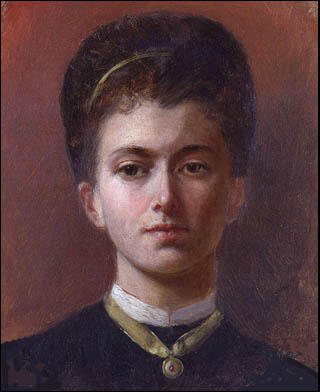
On this day in 1935 Benito Mussolini sent in General Pietro Badoglio and the Italian Army into Abyssinia (Ethiopia). The League of Nations condemned Italy's aggression and in November imposed sanctions. This included an attempt to ban countries from selling arms, rubber and some metals to Italy. Some political leaders in France and Britain opposed sanctions arguing that it might persuade Mussolini to form an alliance with Adolf Hitler and Nazi Germany. Over 400,000 Italian troops fought in Ethiopia. The poorly armed Ethiopians were no match for Italy's modern tanks and aeroplanes. The Italians even used mustard gas on the home forces and were able to capture Addis Ababa, the capital of the country, in May 1936, forcing Emperor Haile Selassie to flee to England.
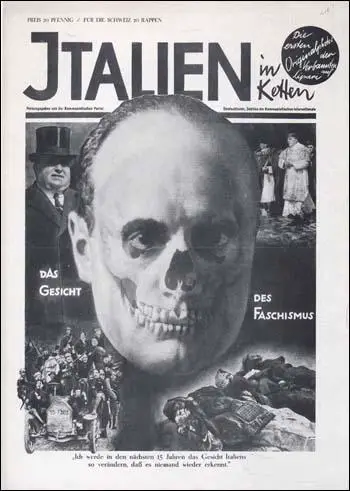
On this day in 1958 Marie Stopes died of breast cancer.
Marie Stopes, the elder daughter of Henry Stopes (1852-1902) and Charlotte Carmichael, (1840-1929) was born in Edinburgh on 15th October, 1880. Her father was an architect from a wealthy brewing family. Her mother was the daughter of the artist, J. F. Carmichael, was the first woman in Scotland to obtain a university certificate.
At university Charlotte Stopes was not allowed to attend lectures and although she took the same examinations as the male students, because she was a woman she was awarded a certificate rather than a degree. Charlotte's university experiences turned her into a passionate feminist and made sure her daughter was fully aware of the arguments for women's suffrage.
According to her biographer, Lesley A. Hall: "Marie Stopes was brought up in a rather dour and puritanical intellectual atmosphere, and dressed according to the tenets of the Rational Dress Society of which her mother was a strong supporter (in later life remaining constant to the anti-corset creed). Initially educated at home by her mother, in 1892 Stopes was sent to St George's High School, Edinburgh, and, two years later, following the family's move to Hampstead, to the North London Collegiate School. Influenced by her father's scientific interests from an early age, when she helped him wash and catalogue hundreds of flints."
At the age of eighteen, Marie Stopes won a science scholarship at University College, London. Marie was a talented and committed student and in 1901 achieved a double first in botany. She proudly wrote to her mother: "I have got my degree. I am now B.Sc. Not only have I got it, I have got it well… I got Honours in Botany and Geology… I am the only candidate with honours; the others (men only) all failed, so my name stands alone in the list. It is supposed to be impossible to take one honours in a year, to get two is nice." She continued her studies and in 1905 she obtained her DSc and became Britain's youngest doctor of Science.
Although very involved in her academic work, Marie Stopes was also interested in politics. Like her mother she supported the women's suffrage campaign and eventually joined the Women's Freedom League. This brought her into conflict with her mother, who was a member of the more militant Women's Social and Political Union. Marie believed in the non-violent approach and was never sent to prison for her beliefs.
After several unsuccessful love affairs, Marie married the Canadian botanist, Reginald Gates on 18th March, 1911. However, she took the unusual step at the time of retaining her surname. Unlike Marie, Gates held traditional views of how women should behave. He strongly opposed her support for women's suffrage. The marriage was annuled for non-consummation in 1916.
During the First World War Marie began writing a book about feminism and marriage. In her book Married Love, Marie argued that marriage should be an equal relationship between husband and wife. However, she had great difficulty finding a publisher. Walter Blackie of Blackie & Son rejected her manuscript with the words: "The theme does not please me. I think there is far too much talking and writing about these things already… Don't you think you should wait publication until after the war? There will be few enough men for the girls to marry; and a book like this would frighten off the few." Blackie objected to passages such as, "far too often, marriage puts an end to women's intellectual life. Marriage can never reach its full stature until women possess as much intellectual freedom and freedom of opportunity within it as do their partners."
It was not until, March 1918, that Marie Stopes found a small company that was willing to take the risk of publishing Married Love. It later emerged that the money was put up by a businessman, Humphrey Verdon Roe (1878–1949). The book was an immediate success, selling 2,000 copies within a fortnight and by the end of the year had been reprinted six times. The book was also published in America but the courts declared the book was obscene and it was promptly banned.
Marie's next book was about birth-control. She had become interested in this subject after meeting Margaret Sanger, a birth-control campaigner from America. Sanger had been converted to socialism, while working as a nurse in the slums of New York City. She observed that many women died of self-induced abortions or raised large families in poverty. Sanger began publishing her own newspaper where she argued in favour of birth-control and abortion. The main theme of her articles was that "no woman can call herself free who doesn't own and control her own body." After advice about birth-control appeared in her newspaper in 1915, she was charged with publishing an "obscene and lewd article". Margaret Sanger fled to Britain and it was while she was in London she met Marie Stopes.
In 1918 Marie Stopes wrote a concise guide to contraception called Wise Parenthood. Marie Stopes' book upset the leaders of the Church of England who believed it was wrong to advocate the use of birth control. Roman Catholics were especially angry, as the Pope had made it clear that he condemned all forms of contraception. Despite this opposition, Marie continued her campaign and in 1921 founded the Society for Constructive Birth Control and Racial Progress. With financial help from her rich second husband, Humphrey Roe, Marie also opened the first of her birth-control clinics in Holloway on 17th March 1921. She knew it would be dangerous as several people in Britain, including Richard Carlile, Charles Bradlaugh and Annie Besant, had been sent to prison for advocating birth-control.
Although Marie Stopes was not prosecuted, Guy Aldred and Rose Witcop, who published a pamphlet written by Margaret Sanger, were found guilty of selling an obscene publication. The case drew much press coverage and the couple were supported financially by John Maynard Keynes, Dora Black and Bertrand Russell. Later that year this group was joined by Katharine Glasier, Susan Lawrence, Margaret Bonfield, Dorothy Jewson and H. G. Wells to establish the Workers' Birth Control Group.
Many Roman Catholics believed that Marie should also be charged with an offence. Halliday Sutherland wrote in an article in The Daily Express where he called for her to be sent to prison. Sutherland also wrote a book, Birth Control a Statement of Christian Doctrine Against the Neo Malthusians, where he accused Marie Stopes of writing obscene books. Stopes sued him for libel and although she lost the initial case, she appealed and won. Later the decision was overturned by the House of Lords.
Marie Stopes became a target for Roman Catholic abuse. One priest complained: "Madam… I consider it most useful to pray God that your writings may not do as much injury to morals - to the ignorant poor especially - which they are calculated to do… It appears to me that a pagan might have written as you do… I had hopes no women would write such books." The Catholic Truth Society argued: "Our faithful Catholic mothers are doing wonderful work for God. In time, if methods of birth control continue to prevail among the non-Catholics, their race will die out and the Catholic race will prevail and thus England will become again what it once was, a Catholic country."
Marie Stopes was involved in several other crusades during her life. This included an attempt to stop education authorities from sacking married women teachers. Marie also become involved in the campaign to persuade the Inland Revenue to tax husbands and wives separately. Lesley A. Hall has argued: "Although Stopes was fast approaching forty, she did not moderate her hectic round of lecturing, writing (including a short pamphlet, A Letter to Working Mothers (1919), explaining birth control in simple language and terms suited to the circumstances of poor women), travelling, dealing with her enormous correspondence, dashing off letters to the newspapers, and joining the deliberations of the National Birth Rate Commission. She still pursued her researches on the composition of coal, undertaken as her war work, at the Home Office experimental station at Eskmeals, Cumberland, at University College, and in a makeshift home laboratory. She published several important papers on the subject and her nomenclature for the four constituents of coal (vitrain, clarain, durain, and fusain) became standard usage."
However, he most controversial campaign concerned eugenics, then not a discredited science. Stopes joined the Eugenics Education Society in 1912 and In Radiant Motherhood she argued that the "sterilisation of those totally unfit for parenthood to be made an immediate possibility, indeed made compulsory." In 1935 Stopes visited Nazi Germany and attended the International Congress for Population Science in Berlin. Stopes was now attacked by some of her former supporters such as Guy Aldred and Havelock Ellis.
Her biographer, Lesley A. Hall has argued: "Of recent years Stopes has been much decried for eugenicist views. A member of the Eugenics Society for many years (she left it her clinics lest they should fall into the hands of the Family Planning Association), like many of her contemporaries she held strong views about good and bad breeding. However, she argued that the majority of women, given the chance to space their pregnancies, would bear healthier children and rear them better. Moreover, the effect of her eugenicist views on the practice within her clinics, and on the advice she gave to correspondents, seems minimal: her sympathy towards individual cases often contradicted her public pronouncements."
Marie Stopes spent the rest of her life campaigning for the causes she believed in. Much of her time was spent writing articles for her newspaper Birth Control News. Marie also wrote novels and poetry. This included Love's Creation (1928) and Love Songs for Young Lovers (1938).
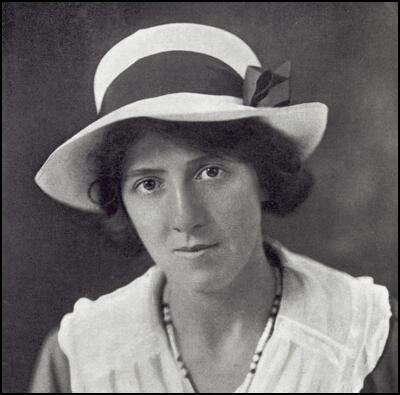
On this day in 1967 Thurgood Marshall sworn in as first black Supreme Court Justice. Charles Houston was one of Marshall's tutors at Howard University and in 1936 he advised Walter Francis White, executive director of the National Association for the Advancement of Coloured People (NAACP), to appoint him to the organization's legal department. The two men now began the NAACP's campaign against segregation in transportation and publicly owned places of recreation, inequities in the segregated education system and restrictive covenants in housing. In 1939 Marshall became director of the NAACP's Legal Defense and Educational Fund. Over the next few years Marshall won 29 of the 32 cases that he argued before the Supreme Court. This included cases concerning the exclusion of black voters from primary elections (1944), restrictive covenants in housing (1948), unequal facilities for students in state universities (1950) and racial segregation in public schools (1954). President John F. Kennedy nominated Marshall to the U.S. Court of Appeals for the Second Circuit on 23rd September, 1961 but opposition from Southern senators delayed the appointment until 11th September, 1962.
